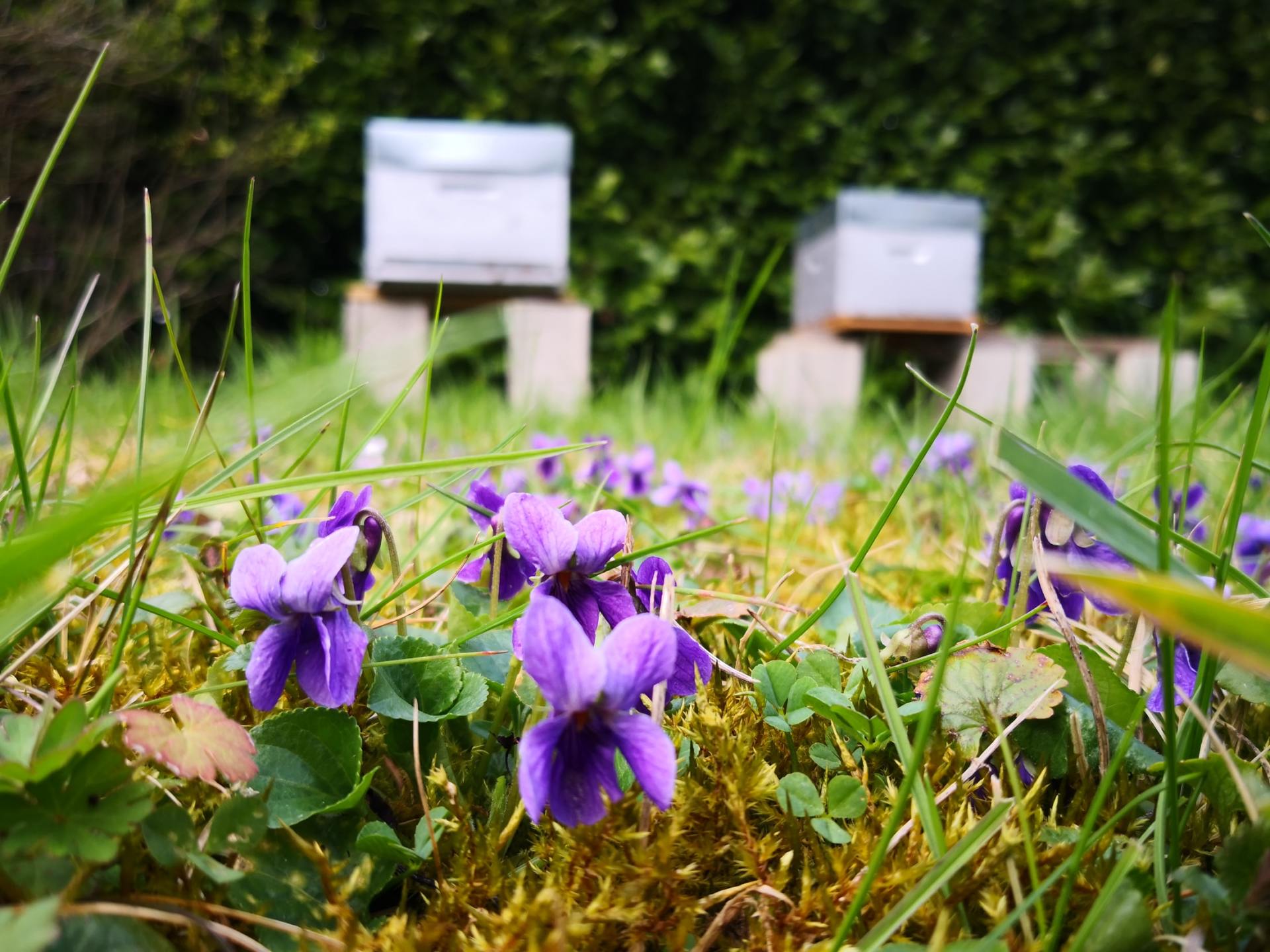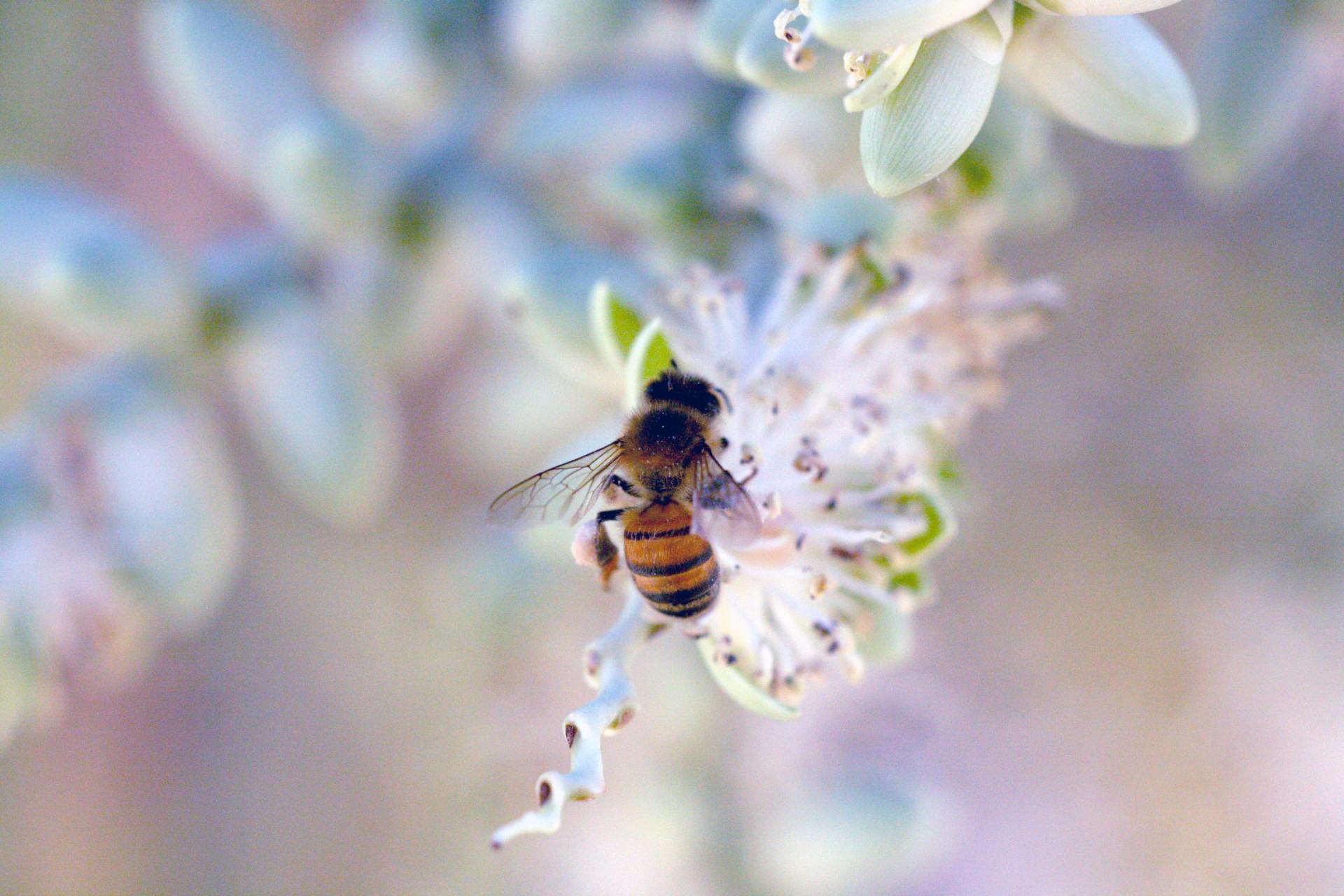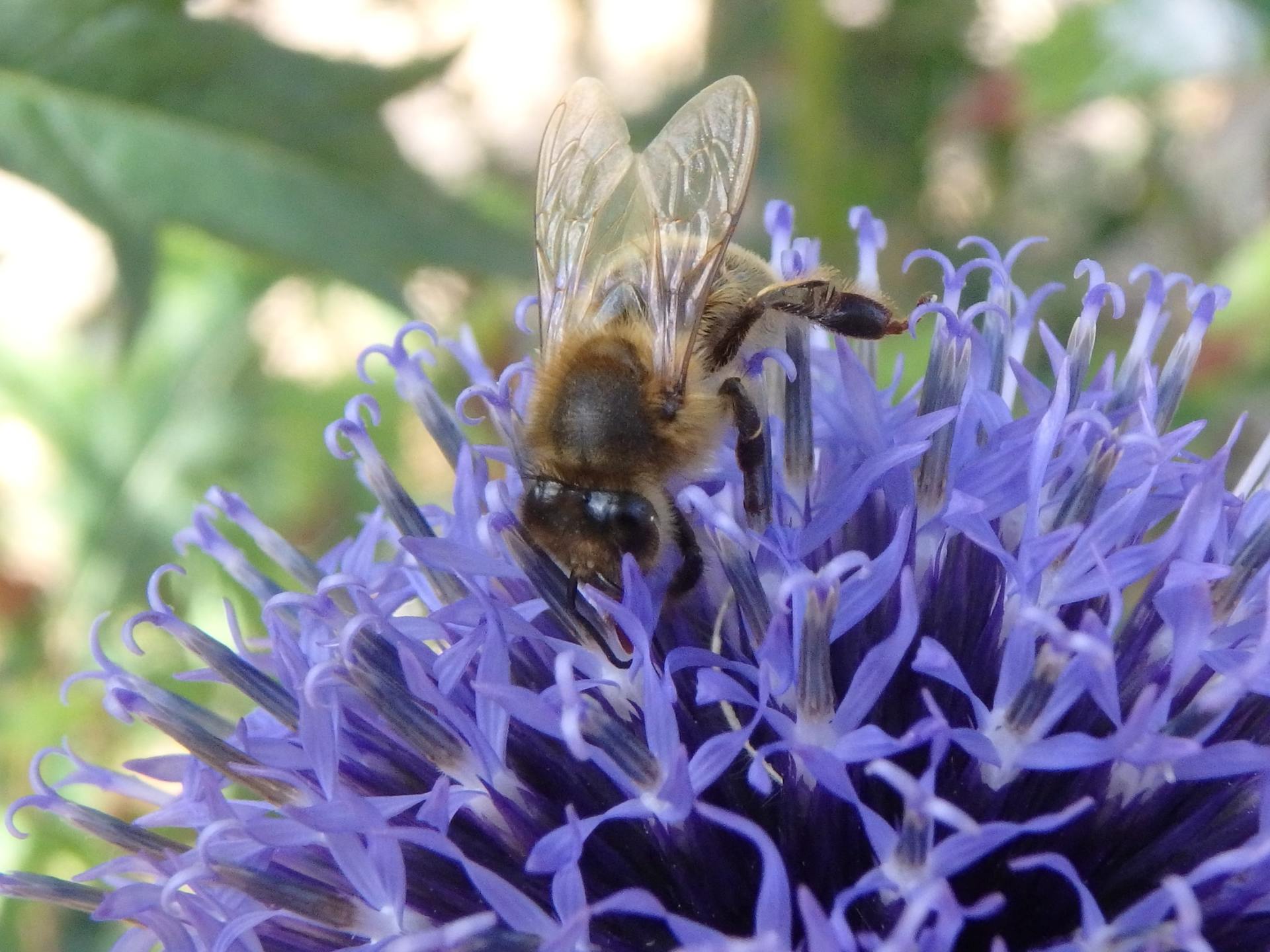Planting for Bees: give them more bang for their buzz!
I’ve been hanging out with my bees for years, watching them forage in various seasons around flower beds, fields, woodlands, creeks and ponds. I’m fascinated by this insect that weighs 1/10th of a gram, can visit up to 2,000 flowers in a day and carry close to her own weight in pollen and nectar. Her miraculous mission is to spend the least amount of energy to bring home the highest quality nourishment for the survival of her colony.
Not only beekeepers, but EVERYONE, can help our bees by planting and conserving nectar-rich bee habitat. Bee habitat is also vital for other pollinators such as native bees, butterflies and more. Here are a few things to remember next time you’re selecting plants for your garden or yard.
Honeybees are attracted to large areas of the same plant. Foraging bees are remarkably constant on the plants they visit – they like to stay a while! Next time you buy a flowering nectar plant at the nursery, bring home a few more pots or flats. Plant about 1 square yard (3 feet by 3 feet) of one plant species. Larger plots of the same flower keep bees foraging longer.
Honeybees are attracted to a variety of plants growing near each other. A variety of nectar plants will provide bees with better nutrition and keep them foraging longer. Create larger flower beds to house a diversity of flowering plants and shrubs by converting portions of the lawn.
Honeybees are attracted to plants that bloom when there’s an absence of blooms. By planting or conserving existing plants that bloom in all seasons and throughout drought periods, our bees will have forage year¬-round. Conserving areas of diverse, native habitat is one way to accomplish this.
Honeybees are attracted to healthy, well-adapted plants. When we chose plants that are native or well-adapted to our region’s soil and climate, we know the plant is more likely to have a longer, healthier life with better nectar production.
Please join in the conversation by sending your observations, suggestions and questions by email.
For more information on planting for bees, see my “Buds and the Bees” article at www.texasbeekeepers.org. Click Resources; click Journal; go to Jan-Feb TBA Journal.


